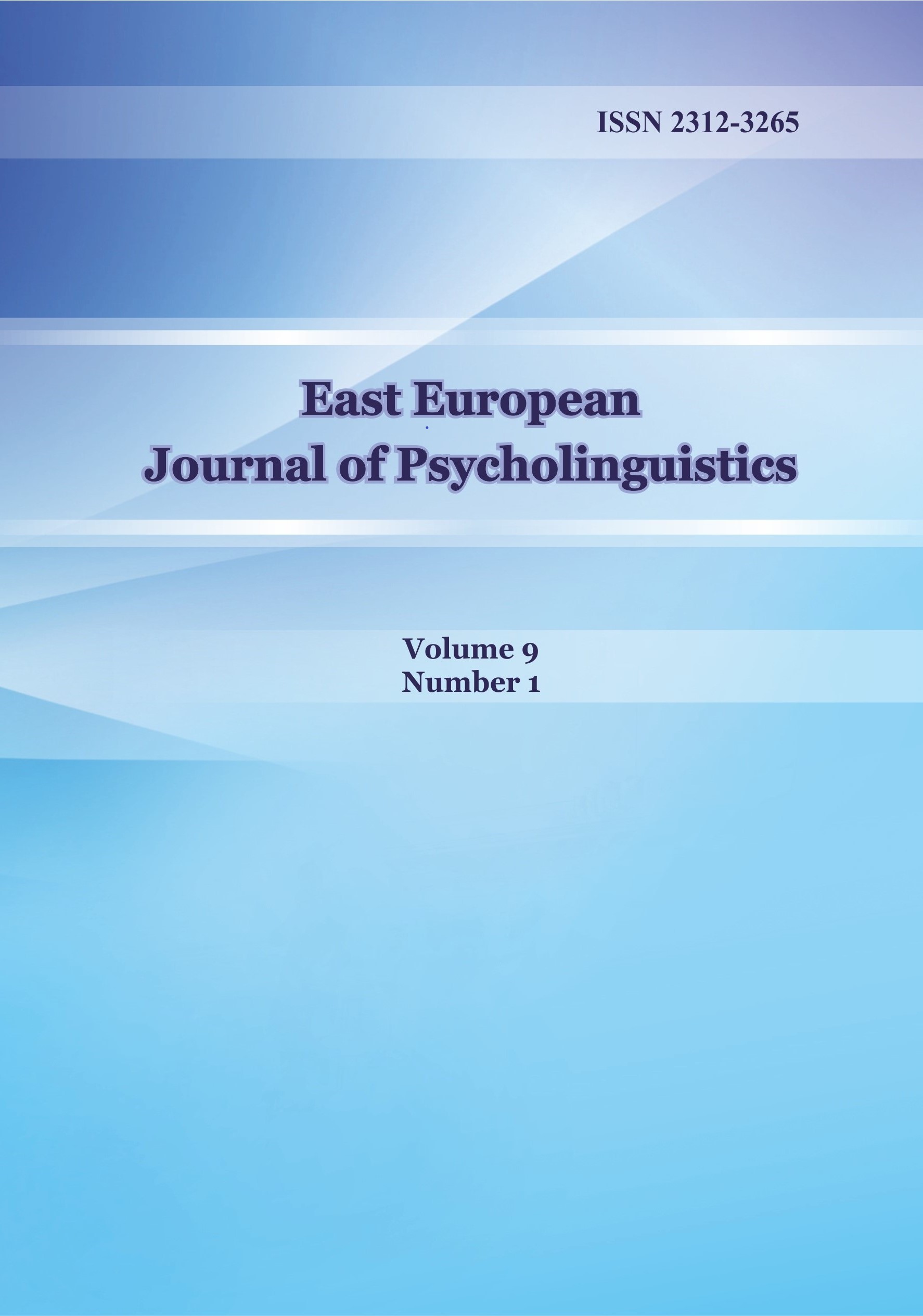Translation and Cross-Cultural Adaptation of Expressed Emotion Measure
DOI:
https://doi.org/10.29038/eejpl.2022.9.1.pasKeywords:
level of expressed emotion, service users, Ukrainian translation, cultural adaptationAbstract
Large gaps of data still exist within the Ukrainian context utilizing Expresses Emotion as a warm, hostile, critical or emotional over-involving behaviour towards individual with a mental or physical condition. The aim of the current article was to suggest translation and cross-cultural adaptation of level of expressed emotion (LEE) as it is perceived by service users. This study applies the LEE which includes four factors: perceived lack of emotional support (pLES: 19 items), perceived intrusiveness (pIN: seven items), perceived irritation (pIR: seven items), and perceived criticism (pC: five items). All items are rated according to frequency and intensity on a four-point Likert scale 1 to 4 (1: untrue; 2: somewhat untrue; 3: somewhat true; 4: true). The total score of the 38 items is entitled perceived expressed emotion (pEE). LEE has strong psychometric properties in adolescents and adults. The translation LEE followed WHO guidelines (2020) and comprises some stages, namely a forward translation from English to Ukrainian, a back translation, expert panel validation, pretesting and cognitive face-to-face interviews with 10 clinical psychologists. The Ukrainian translation version of LEE meets requirements of LEE original version. However, some items were transformed according to semantic, grammatical or stylistic norms of the Ukrainian language. The Ukrainian version of LEE is the first psychometric tool to assess expressed emotion in a Ukrainian healthcare setting.
Downloads
References
Bressi, C., Cornaggia, C. M., Beghi, M., Porcellana, M., Iandoli, I. I., & Invernizzi, G. (2007). Epilepsy and family expressed emotion: Results of a prospective study. Seizure, 16(5), 417-423. https://doi.org/10.1016/j.seizure.2007.02.015
Brown, G. W., & Rutter, M. (1966). The measurement of family activities and relationships: A methodological study. Human Relations, 19(3), 241-263. https://doi.org/10.1177%2F001872676601900301
Cook, W. L., Kenny, D. A., & Goldstein, M. J. (1991). Parental affective style risk and the family system: A social relations model analysis. Journal of Abnormal Psychology, 100, 492–501. https://psycnet.apa.org/doi/10.1037/0021-843X.100.4.492
Cole, R. E., & Reiss, D. (1993). How do families cope with chronic illness? London: Hillsdale.
Engel, G. L. (1979). The biopsychosocial model and the education of health professionals. General hospital psychiatry, 1(2), 156-165. https://doi.org/10.1016/0163-8343(79)90062-8
Epstein, E. G., Whitehead, P. B, Prompahakul, C, Thacker, L. R, Hamric A. B. (2019). Enhancing Understanding of Moral Distress: The Measure of Moral Distress for Health Care Professionals. J AJOB Empir Bioethics, 10(2), 113–24. https://doi.org/10.1080/23294515.2019.1586008
Forster, J., Finlayson, S., Bentall, R., Day, J., Randall, F., Wood, P., ... & HEALY, D. (2003). The perceived expressed emotion in staff scale. Journal of Psychiatric and Mental Health Nursing, 10(1), 109-117. https://doi.org/10.1046/j.1365-2850.2003.00529.x
Gerlsma, C., & Hale, W. W. (1997). Predictive power and construct validity of the Level of Expressed Emotion (LEE) scale: Depressed out-patients and couples from the general community. The British Journal of Psychiatry, 170(6), 520-525. https://psycnet.apa.org/doi/10.1192/bjp.170.6.520
Gottschalk, L. A., & Gleser, G. C. (1979). The measurement of psychological states through the content analysis of verbal behavior. Univ of California Press.
Hale, W. W., Raaijmakers, Q. A., Gerlsma, C., & Meeus, W. (2007). Does the level of expressed emotion (LEE) questionnaire have the same factor structure for adolescents as it has for adults? Social Psychiatry and Psychiatric Epidemiology, 42(3), 215-220. https://doi.org/10.1007/s00127-006-0145-0
Hooley, J. M., & Parker, H. A. (2006). Measuring expressed emotion: an evaluation of the shortcuts. Journal of Family Psychology, 20(3), 386. https://doi.org/10.1037/0893-3200.20.3.386
Leff, J. P., & Vaughn, C. E. (1985). Expressed emotion in families. New York: Guilford Press.
Tanaka, K., Iso, N., Sagari, A., Tokunaga, A., Iwanaga, R., Honda, S., ... & Tanaka, G. (2015). Burnout of long-term care facility employees: relationship with Employees' expressed emotion toward patients. International Journal of Gerontology, 9(3), 161-165. https://doi.org/10.1016/j.ijge.2015.04.001
Wearden, A. J., Tarrier, N., Barrowclough, C., Zastowny, T. R., & Rahill, A. A. (2000). A review of expressed emotion research in health care. Clinical Psychology Review, 20(5), 633-666. https://doi.org/10.1016/s0272-7358(99)00008-2
Wearden, A. J., Tarrier, N., & Davies, R. (2000). Partners' expressed emotion and the control and management of Type 1 diabetes in adults. Journal of Psychosomatic Research, 49(2), 125-130. https://doi.org/10.1016/S0022-3999(00)00141-0
World Health Organization. Process of translation and adaptation of instruments. (2020). Retrieved from https://www.who.int/substance_abuse/research_tools/translation/-en/
Zasiekina, L. (2018). Expressed Emotion towards individuals with mental and physical health conditions: A structured literature review. East European Journal of Psycholinguistics, 5(2), 108–117. https://doi.org/10.29038/eejpl.2018.5.2.zas
Downloads
Published
Issue
Section
License
Copyright (c) 2022 Tetiana Pastryk, Mykhailo Kots

This work is licensed under a Creative Commons Attribution 4.0 International License.










 Creative Commons «Attribution» 4.0
Creative Commons «Attribution» 4.0